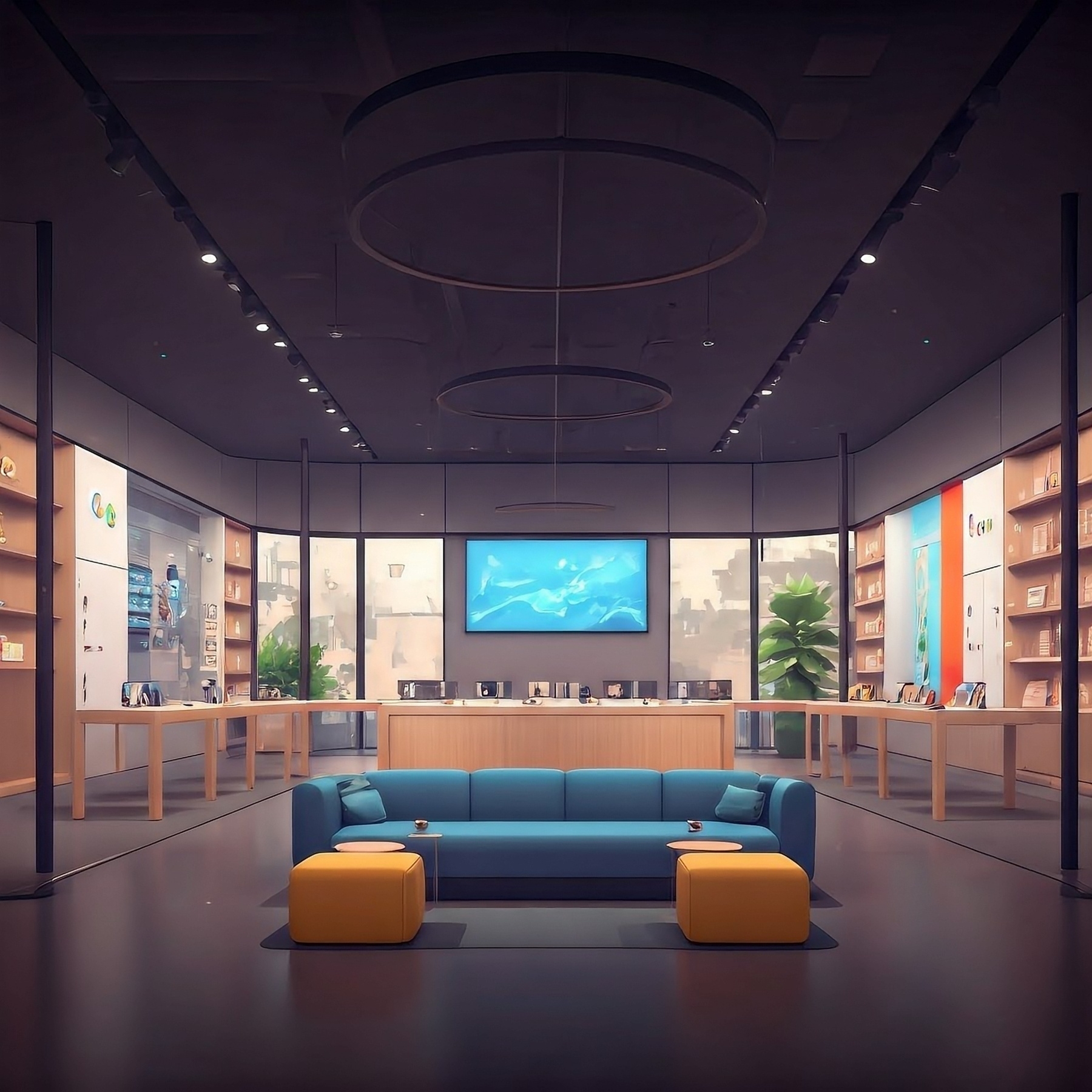Category: Longform
You are viewing all posts from this category, beginning with the most recent.
Galaxy Watch Ultra: Day 4
I’ve only been using the Galaxy Watch Ultra for 4 days now. I really like the fluidity and battery life of it. However, I’m beginning to feel like it’s overkill for what I mainly use my smartwatch for. Maybe because I’m coming from the thoughts of my experience with a Pixel Watch and an Apple Watch. The Galaxy Watch Ultra feels incredibly premium with so many useful features that I don’t think I’ll really use to justify and differentiate the reason to not just go back to my Pixel Watch 3. The display is beautiful and bright, the speed is warranted, and the build bolds confidence. Yet, the Pixel Watch 3 feels good enough to need the extra brightness, titanium build, and speed. I think if the Galaxy Watch Ultra was slightly smaller, like the Hermès H08 that it favors, I would feel more drawn to wear it as a lifestyle smartwatch. But for now, I feel like I’m wearing a strong, utilitarian Pip-Boy
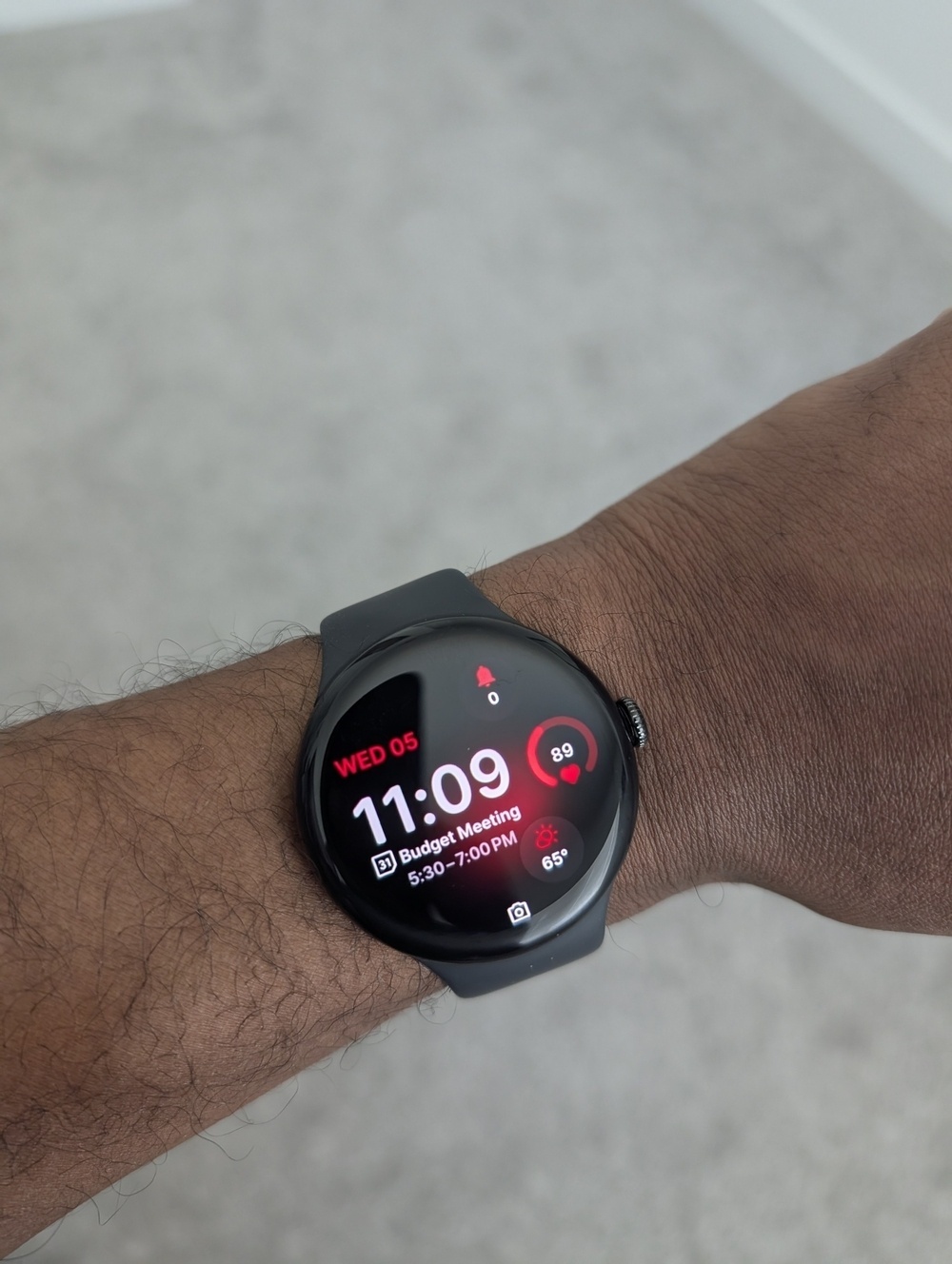
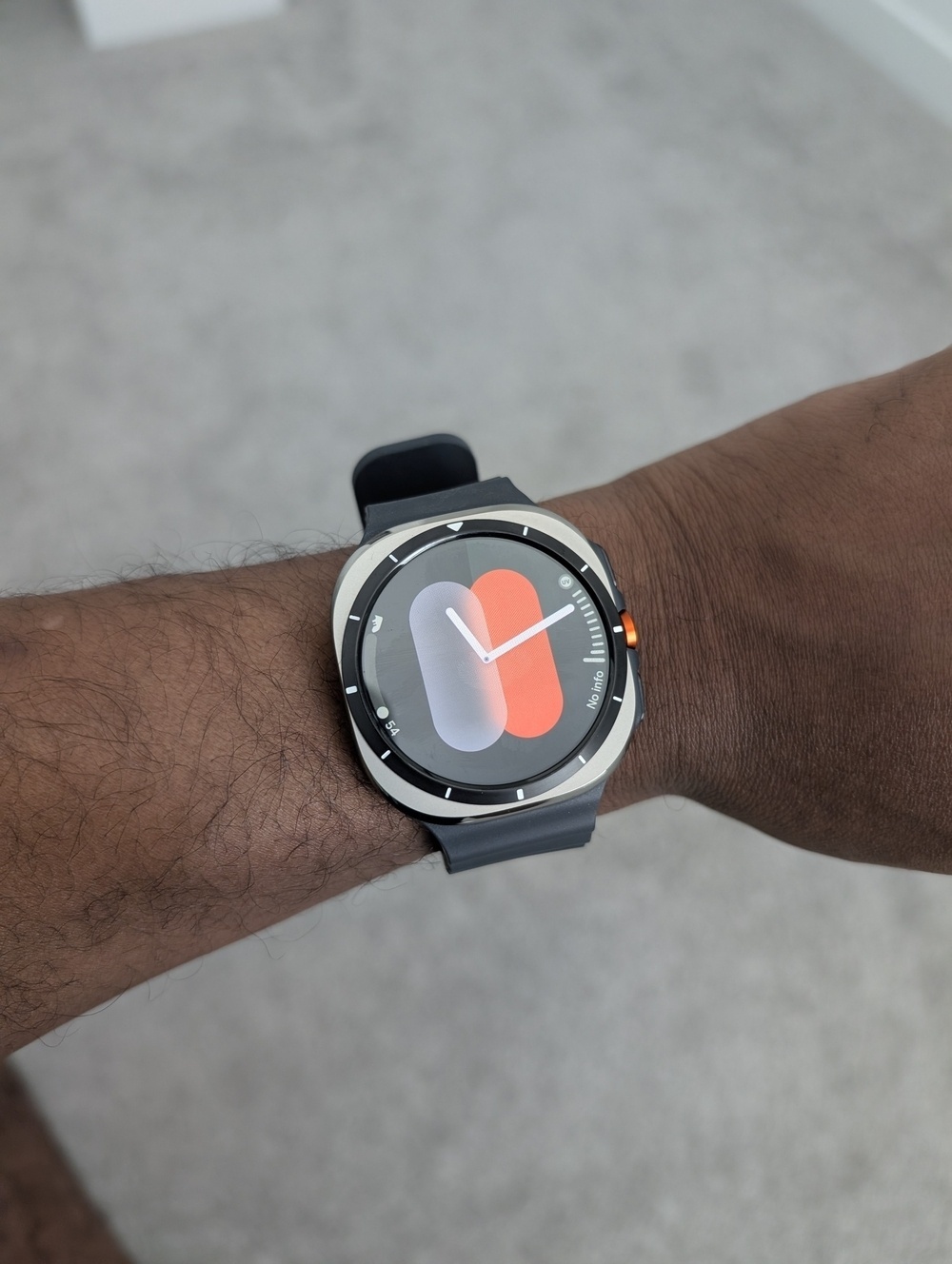
March Pixel Drop, RCS on more iPhones, and the end of an Android era
Some were big surprises and others were long awaited catch-ups. It wasn’t all boring though. Google announced the latest March Pixel Drop with a lot of useful tools and features for the Pixel family of devices ranging from Pixel 6 to the latest Pixel 9 Pro Fold, Pixel Watch, and Pixel Tablet. Last, but certainly not least, the Android journey looks to have come to an end for longtime Android engineer and engineering director Romain Guy. If you’ve been living under a rock, Romain Guy has been such an important engineer to the fundamentals of a lot of Androids toolkits that we have today.
Today was certainly one for the books, but there’s certainly more exciting things to come in the near future.
For a full breakdown of the March Pixel Drop, I suggest checking out In depth Tech Reviews breakdown on YouTube.
Pixel Sense: Google's On-Device AI Leap
“Experience fast and intelligent help, no matter if you are online or offline ”, “Your data stays private—visible only to you, not even Google can see it.”
Kamila Wojciechowska at @AndroidAuthority gained access to a pretty hefty @GooglePixel leak and it’s everything I’ve been looking forward to in a smartphone. Apple level privacy with Google level usefulness. From the sound of everything in the leak, it sounds like Google is looking to bring its version of Apple Intelligence to its Pixel 10, but calling it “Pixel Sense”. I absolutely love the name. Obviously it’ll be powered by Gemini, but with it being completely on-device (🤯) and private, it sounds like Gemini Nano will be at the steering wheel, making all the data processing across all Google apps on Pixel 10 happen swiftly and privately on-device.
My suspicion is that the driving factor for this is speed, privacy is just the blessing result of on-device processing. A good example of this is Gboard’s Assistant Voice typing and Proofread feature. At this point, Google already has a Scrooge McDuck level of user data locked up in an encrypted vault. It’s now all about making your data more universally accessible to you. It sounds like the latest evolution of that is making our own personal data even more useful and quickly accessible to us. It sounds awfully similar to what Apple announced at WWDC'24, a whole year ago, that has yet to even be released on the latest iPhone 16 models. And rumor has it, by Mark Gurman, that the iPhone won’t even see that until 2027. . Also something to consider is that this is something OpenAI won’t be able to do anytime soon until they make their own hardware. Unless Apple, Samsung, or any other hardware makers decide to give OpenAI’s ChatGPT access to secure enclaves.
The Green Bubble Divide: Are Google's Texting Ads Working?
Online dating has become commonplace. For some Android users, the initial exchange of phone numbers or text messages can be a source of anxiety, as some Apple iPhone users, even in 2025, may hold prejudices against Android devices. When that infamous green bubble appears on an iPhone, some iPhone users are conditioned to disdain the sender, regardless of the prior conversation’s quality or the individual’s profile appeal. Gen Z members of my production team have explicitly stated that they would decline to date an individual solely based on their use of an Android phone, irrespective of other positive qualities.
This issue is largely confined to North America, prompting Google to enlist Keke Palmer for a campaign addressing this prejudice during the recent Valentine’s Day. The ad begins with a man preparing to respond to a “Heyyyyy” text from “Sarah.” The display clearly indicates “RCS chat with Sarah” and “RCS Message,” highlighting the use of Rich Communication Services. The ad emphasizes the ability to send reactions and high-resolution images, features previously unavailable between Android and iPhone. Notably, KeKe Palmer dismisses the man’s concern about Sarah being an iPhone user being a problem with an eye roll, mirroring the sentiments of my Gen Z team members.
It’s a peculiar dynamic, and Google’s investment in educating consumers about the benefits of RCS is commendable. I wonder if Google might further amplify this message by showcasing couples like my wife and me, who found and maintain a loving relationship despite our differing phone preferences. My wife, an iPhone user, expresses a desire to switch to a Pixel, but is hindered by her iMessage group chats.
Perhaps this “green bubble” bias reveals a deeper societal issue: a tendency to judge others based on superficial technological choices. In a world increasingly reliant on digital connections, it’s worth considering the limitations we inadvertently impose through brand loyalty and platform preferences. Google’s campaign, while lighthearted, serves as a timely reminder to embrace inclusivity, even in our texting habits. After all, meaningful connections transcend the color of a chat bubble.
I hope that in the future, judging someone based on their phone choice will become as antiquated as using a rotary phone. I have to ask, are these ads working?
Microsoft is shutting down Skype in favor of Teams
“If you don’t cannibalize yourself, someone else will” a saying I believe Steve Jobs said likely expressing his sentiment during the development of products like the iPhone, which cannibalized the iPod market.
Skype will be retired on May 5th, and existing users will need to export their data or migrate to Teams.
Microsoft will now be fully focused on Teams for consumers, after launching the personal version in 2020. At the time, Microsoft said it was still fully committed to Skype, but it’s been clear in recent years that the company was preparing for the eventual retirement of Skype. In December, Microsoft killed off Skype credits and phone numbers in favor of subscriptions, another sign that the end of Skype was nearing.
“Initially the vision was to have one experience across work and life… but Teams was new and that was not realistically where we were in 2020,” reveals Teper. “So we continued to invest in Skype, and about two to three years ago we started bringing in the free Teams consumer experience with the new client. We wanted to wait until the adoption was at the scale where we could be very convinced it was the right time.”
It’s certainly the end of an era. Personally, I never used Skype as much as most people did. In fact, I believe at one point Skype was the number one video chatting experience that ushered in the Jetsons futuristic approach of communication. Skype had a head start, but during the pandemic didn’t seem to be the go-to for people wanting to connect. That went to Zoom.
I still think Google Meet is in the best position to hold the spot for both consumer based and business based video based communication.
| App | Description |
|---|---|
| Zoom | A cloud-based video conferencing service that allows users to meet online, with or without video. |
| Google Meet | A video communication service developed by Google. |
| Microsoft Teams | A proprietary business communication platform developed by Microsoft. |
| Skype | A telecommunications application that specializes in providing video chat and voice calls between computers, tablets, mobile devices, the Xbox One console, and smartwatches over the Internet. |
| FaceTime | An audio and video calling service developed by Apple. |
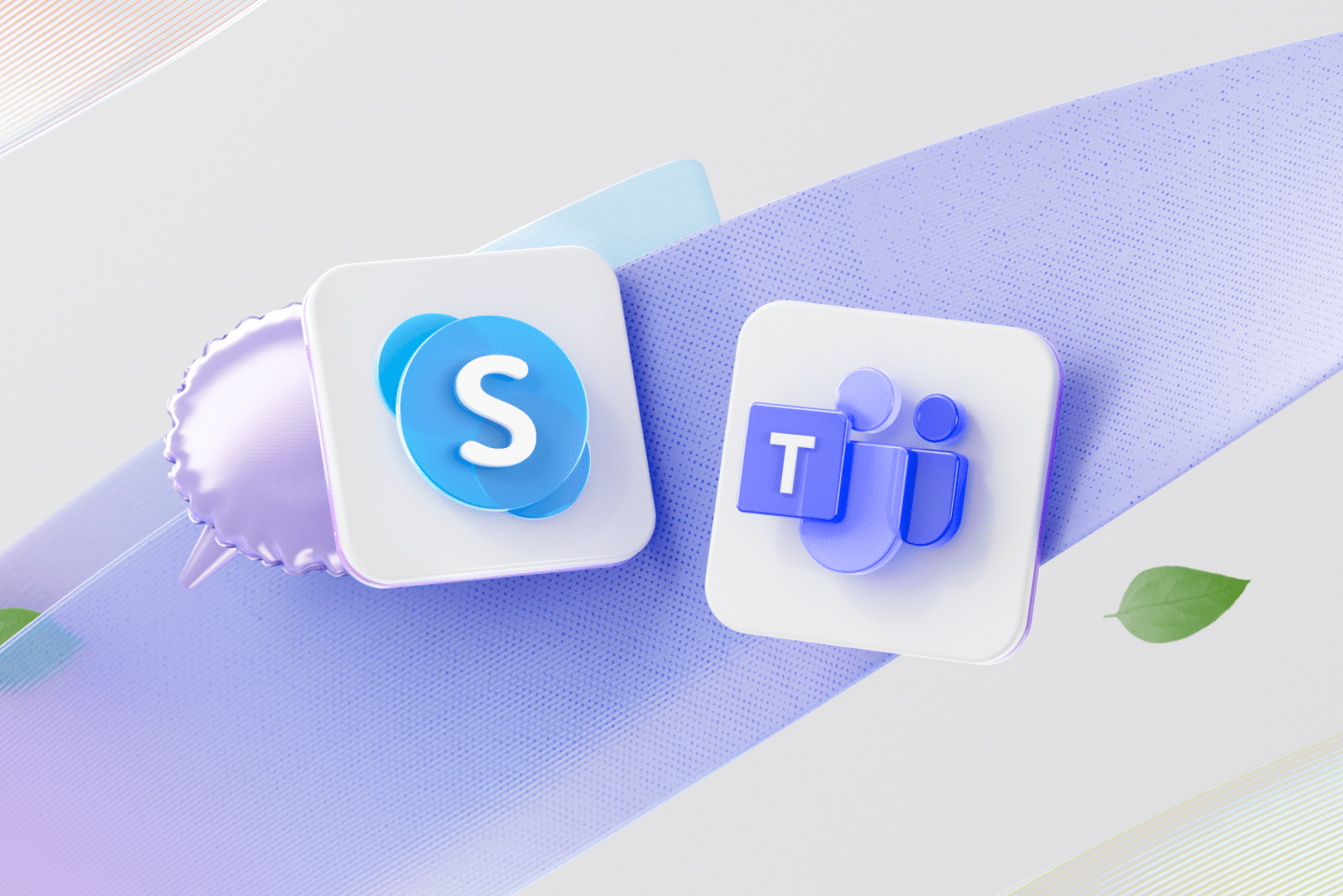
Google's Santa Monica Store: A Step Forward, But Is It Enough?
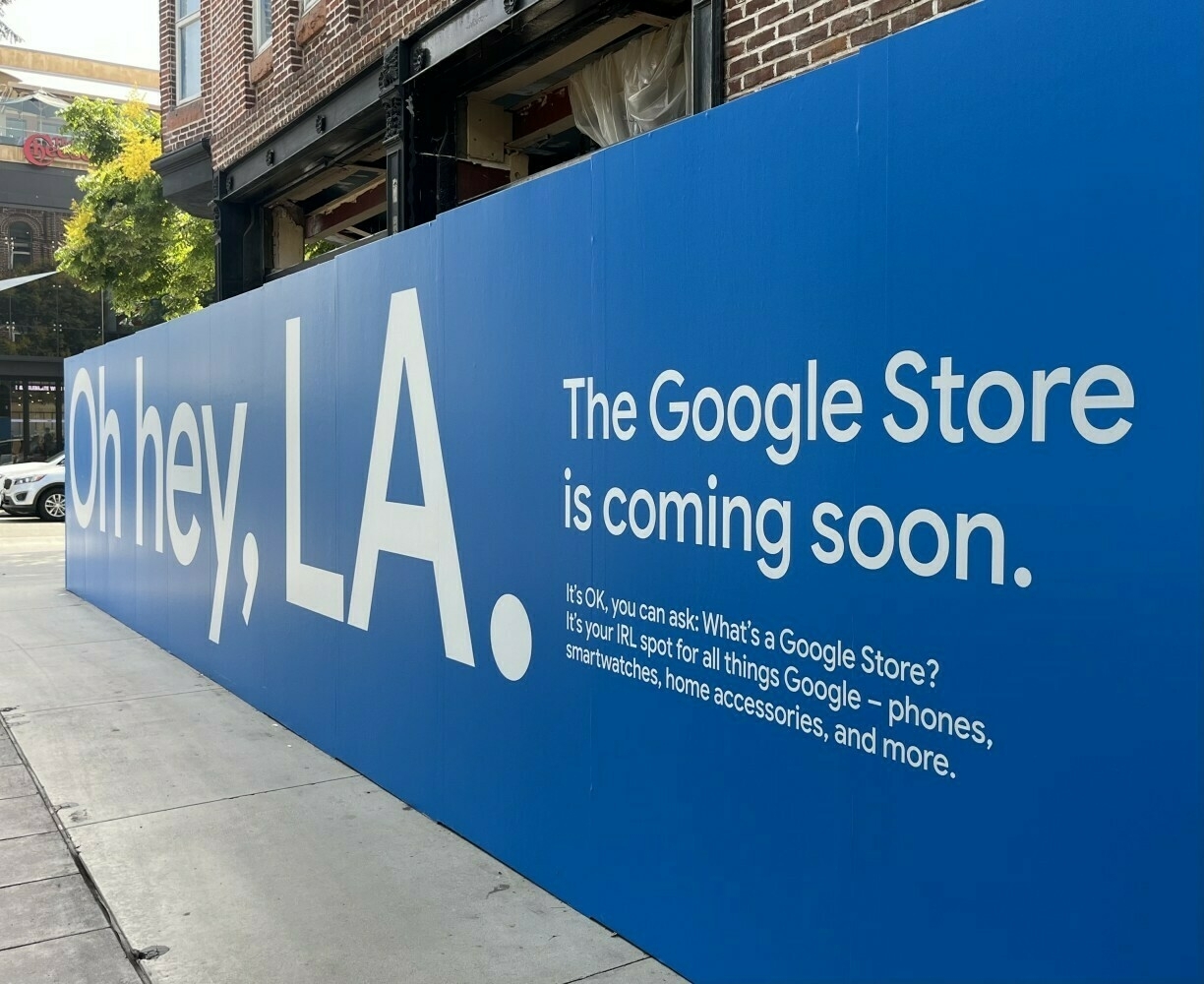
Google’s latest retail venture lands in sunny Santa Monica, California, with an official launch date of March 7th, as reported by 9to5Google:
“As teased at the end of Made by Google 2024 in August, a Google Store is coming to Santa Monica and will open Friday, March 7. This is Google’s sixth retail location and will be the second in California after Mountain View. It’s located at 1460 3rd Street Promenade, Santa Monica, CA 90401 and will open on Friday, March 7 at 10 a.m. PT."
While this is the closest Google Store to me since moving from the East Coast, it’s still a hefty 300+ miles away. This makes me wonder: Where’s Google’s ambition? Back in 2001, Apple boldly declared plans to open 50 stores in a single year. Apple proudly trumpeted this achievement in a newsroom press release:
“CUPERTINO, California—November 25, 2002—Apple® opened its 49th and 50th retail stores in the U.S. this weekend, with new store locations in Denver, Colorado and Emeryville, California. The Company now has stores in 24 states in the U.S., with a retail location within 15 miles of 85 million people, about one third of the U.S. population.” - Apple Newsroom
“We’re thrilled to have reached our 2002 goal of 50 retail stores in the U.S. in time for the holiday shopping season,” said Ron Johnson, Apple’s senior vice president of Retail. “Our stores are a great place to shop for hot holiday gifts like iMacs and iPods.”
Six stores in four states in nearly five years? This sluggish pace suggests a stark contrast to Steve Jobs’s retail vision back in 2001. Jobs understood that retail was about more than transactions; it was about education and experience. He envisioned Apple stores as hubs for learning about computers, the internet, and Apple’s ecosystem. Google has the same opportunity.
Google Stores could be dynamic spaces for exploring ChromeOS, the power of AI, and the breadth of Google’s offerings. In today’s tech landscape, Google is uniquely positioned to lead in this space. Why, then, the hesitant rollout of just six stores in under five years?
Google's Pixels are Apple's TVs
“Google treats its entire Pixel portfolio like Apple treats Apple TV hardware. They make the best parts of it available on other platforms, greatly reducing the perceived value of their own hardware. Why switch to a Pixel when almost all of Google’s apps are available on iOS? Why switch to an Apple TV box when the TV app and iTunes Store are built into your “smart” TV?”
This is something I’ve understood for as long as owning a Google Nexus. I’ve always wondered how Google approaches hardware development, especially given their lack of the kind of exclusive ecosystem that Apple cultivates. Even other Android OEMs have some unique features. That just wasn’t Google’s culture in building its products. Google is synonymous with software, encompassing products like Search, YouTube, Gmail, and Android. We’re nearing the 10th generation of the Google Pixel. Hiroshi Lockheimer’s prediction that “eight years from now we’ll be talking about Oct 4, 2016” has already passed. October 4th, the release date of the original Google Pixel, was what many, including myself, assumed he was referencing. However, it’s now 2025, nearly ten years later, and Google’s Pixel has only achieved a 4% market share, according to Counterpoint Research. However, it still feels like gaining market share in their hardware isn’t Google’s main goal. News broke from 9to5Mac analyst Aaron Perris that Google’s Gemini AI is coming to iOS next to Siri in a future update. Echoing Gruber’s analogy, this demonstrates Google making its key Pixel features available on other platforms.
I think Google needs to better articulate the value proposition of the Pixel to its existing customers, let alone attract new customers in carrier stores. Perhaps a renewed focus on hardware exclusivity, or a clearer articulation of Pixel-specific benefits, is needed.
Google Pixel 8a Review: A Year Later
"Size matters not. Look at me. Judge me by my size, do you?" - Yoda, Star Wars: The Empire Strikes Back.
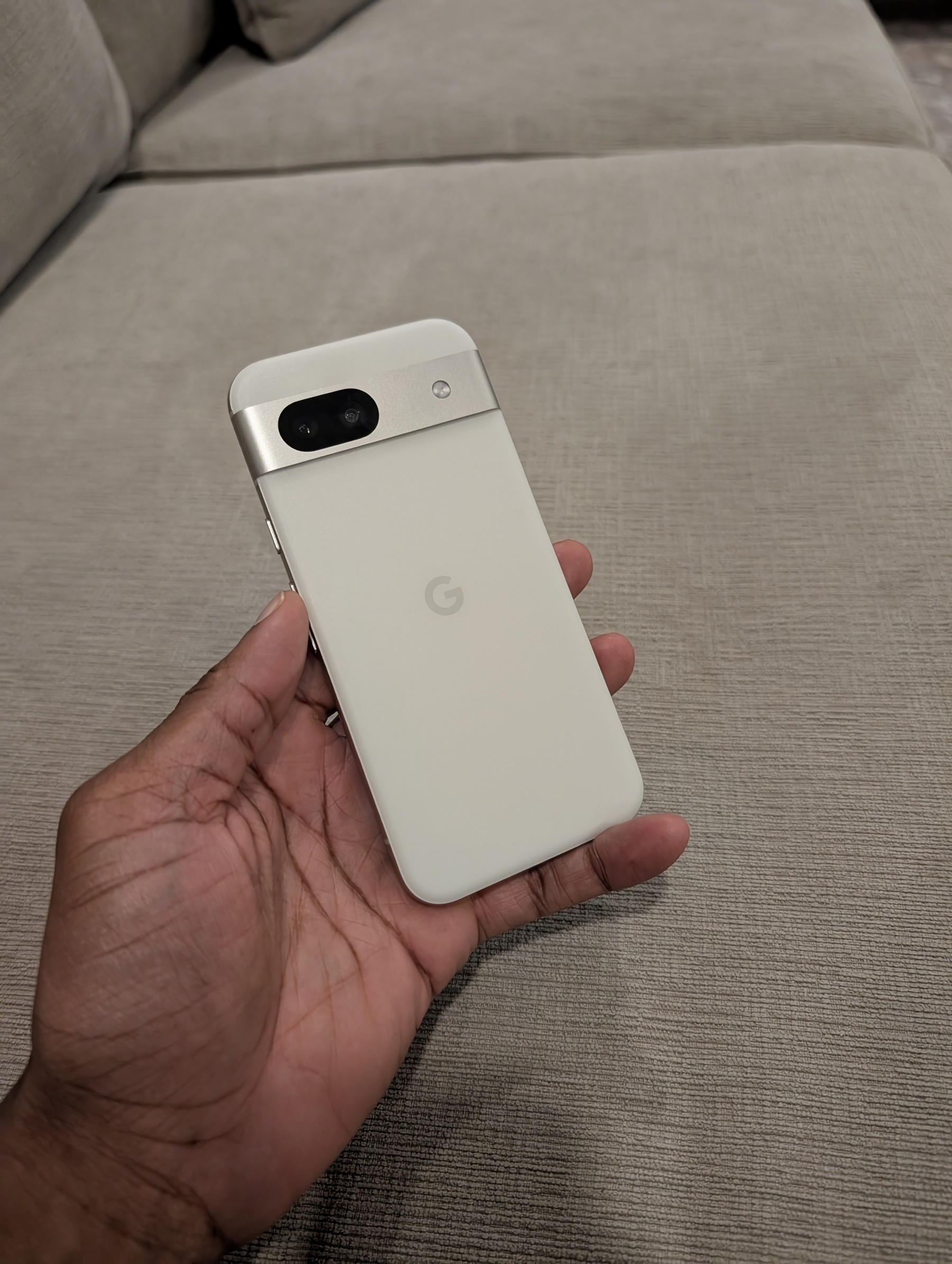
Having followed Google’s Pixel line since its inception in 2016, from the original Pixel to the latest Pixel 9 Pro (and even the Pixel Fold), I’ve developed a deep appreciation for Google’s contributions to the smartphone market. My experience with iPhones (6, 6s, X, Xs, and 12) has further broadened my perspective. However, it’s the budget Android segment, a significant portion of global smartphone sales, that truly captivates me. The Pixel 8a, initially released at $499 but now available for $300-$400 a year later, offers amazing value: a device promising six more years of feature updates.
The Pixel 8a immediately feels comfortable in hand. It’s easy to handle, not prone to slipping, and not overly heavy or clunky. While it lacks the premium feel of my Pixel 9 Pro, it possesses a reassuring solidity. It’s like a familiar, comforting tool. The matte back feels surprisingly sturdy, almost like a warm porcelain countertop. The buttons offer a satisfying “click,” though they betray the phone’s budget origins slightly, lacking the springy resistance of a higher-end device. Even after a year of use, the click persists. Crucially, one-handed use is a breeze, even for my (slightly above average) sized hands; reaching all four corners of the screen is effortless. It’s not a “mini” phone, but it disappears comfortably into a back pocket, sometimes even flipping around due to its manageable size.
The feel of a phone is paramount, as smartphones are deeply personal devices that perform a multitude of general and specialized tasks throughout our day. They need to feel approachable, relatable, and human – an extension of ourselves, not an interruption. The Pixel 8a achieves this beautifully, particularly with its matte finish and flat display. There’s no awkwardness in holding it; the curvature simply settles into your hand. Unlike some flagship phones that scream “luxury item,” the 8a feels like a tool – one you appreciate more when you consciously focus on its thoughtful design.
I particularly appreciate the rounded edges, reminiscent of a perfectly smooth doorknob. The camera bar, while subtle, is a minor point of contention. It creates a slight disruption, particularly when the phone is in a case (even official Google cases), unlike the more integrated camera module of the Pixel 9 Pro. But the color options – especially the Bay and Aloe (though my wife prefers the Porcelain of our review unit) – are absolutely delightful. My main design quibble is the bezels. While not overly large, they are noticeable. I prefer a more minimalist approach, though I understand the need for some bezel.
The Pixel “a” series, following the pattern of the 3a after the 3, the 4a after the 4, and so on, continues with the 8a. It borrows heavily from the Pixel 8, with some compromises in camera hardware, display, and (in previous years) wireless charging. However, the line between the “a” series and the mainline Pixels is blurring, especially with price fluctuations. The 8a’s $499 launch price often overlaps with discounted Pixel 8 prices, sometimes making the 8a seem redundant. The Pixel 8a is, at its core, a budget-friendly Pixel 8. It retains the flagship-level software experience – the AI smarts, the Google Photos magic – but packages it in more affordable hardware.
In real-world use, the differences between the 8a, the 8, and even my 9 Pro are subtle but noticeable. Performance-wise, both share the Tensor G3 chip, so general usage feels snappy. However, the reduced RAM in the 8a becomes noticeable during processing-intensive tasks like Magic Editor edits, which take slightly longer. The camera compromises are most apparent in ultrawide (.5x) shots, where the 8a’s limitations become clear. While not a “camera hero,” Google’s AI processing delivers surprisingly good results, even compared to the 9 Pro’s wide-angle lens.
The display is excellent for its price. While it struggles in direct sunlight, it’s bright enough for most conditions. And the 120Hz refresh rate is a welcome addition, making the transition from my 9 Pro far less jarring than it could have been. Battery life is adequate. I found myself reaching for a charger sooner than usual, though my use of Pixel Stands mitigates this. The “Limit to 80%” battery optimization feature is a welcome addition for long-term battery health.
The under-display fingerprint sensor is fast and reliable. While not as instantaneous as the ultrasonic sensor on the 9 Pro, it’s perfectly adequate for everyday use. And the software? This is where the 8a truly shines. A year after its release, Pixel Feature Drops continue to enhance the experience, bringing features typically reserved for the premium Pro models. With seven years of software support guaranteed, the 8a is a long-term investment.
The 8a comes in 128GB and 256GB storage options. I chose the 128GB version, relying on my 2TB Google One cloud storage and Google Photos. The display size is a sweet spot for me. It’s not too small to be considered “mini,” nor so large that I need my Pixel Tablet. It fits comfortably in my hand and pocket. My wife, coming from an iPhone 13 Mini, finds it a significant upgrade in size and usability. The size and design make taking photos and videos easy. It’s simple to pull the phone out of a pocket. However, the bezels, while not a major issue overall, become slightly distracting when composing shots with specific framing in mind. The 8a’s pricing is a bit confusing. Its $499 launch price often overlapped with discounted Pixel 8 prices, making the choice less clear. This underscores the need for potential buyers to compare prices and features between the 8a and the 8 (or consider waiting for the 9a). I helped my parents purchase their Pixel 8a phones, and they absolutely love them, capturing surprisingly good photos (even of a heron on their deck!) without needing to be photography experts or spend a fortune. This exemplifies the 8a’s target audience: users who appreciate a good camera and a smooth Android experience without breaking the bank.
The main trade-offs with the 8a compared to the Pixel 8 are the camera sensor size (affecting light capture and detail), the RAM (impacting AI processing speed), and the more visible bezels. If these aren’t deal-breakers, and the Pixel 8 isn’t cheaper, the 8a is an excellent choice. The ideal Pixel 8a user wants a smooth, reliable Android experience with a great camera for the price, and values long-term software support. They might be upgrading from an older phone, seeking the best mid-range value, or prefer a smaller, more manageable device.
I recommend the Pixel 8a, especially given its continued software support, future feature drops, solid battery life, and affordable prices on platforms like Swappa. Even a year later, the software remains snappy, demonstrating Google’s commitment to the “a” series. I’m confident the Pixel 8a will age well, thanks to Google’s seven-year update commitment and features like Battery Optimization. It’s a phone that surpasses expectations for its size and price, delivering a surprisingly premium experience in a comfortable package.
Disclosure: I am a member of the Google Pixel Superfans community, which is an invitation-only program for Pixel enthusiasts. As a Superfan, I sometimes receive early access to information or products, and I may attend exclusive events. However, I was not compensated for this review, and the opinions expressed here are entirely my own. I did [or did not] receive a review unit of the Pixel 8a.
I thought you might like this great deal from Google Store’s Referral Program. Use code REF-UHEQJ35YXIX9HQRXK0LZS66 at checkout! More details on the program can be found here: store.google.com/ideas/pix…
Google Opens One of it's Largest Offices in Bengaluru
Google normally opens retail stores near it’s offices. With rumors spreading that Google is opening it’s first international retail store in India, Google has officially announced the opening of one of it’s largest offices globally:
Anand Rangarajan, Vice President, Google Deepmind
Sunil Rao, Vice President, Global Delivery, Google Cloud India
“India has always played the role of a strategic nerve centre in the tech discourse—this is evident in the thriving startup and app ecosystems, the digital public infrastructure that’s transforming life for hundreds of millions of Indians, and the depth and diversity of Indian creators.
For two decades, we have been proud to play a role in facilitating this transformation further—through AI-powered flood forecasting, specialized AI models to catch tuberculosis early, and helping millions of people join the formal economy with Google Pay, to name just a few examples.
Increasingly, we have been building from India, for the world.
Today, we are excited to share another major milestone in our ongoing commitment to India, with the inauguration of Ananta—one of Google’s largest offices globally.”
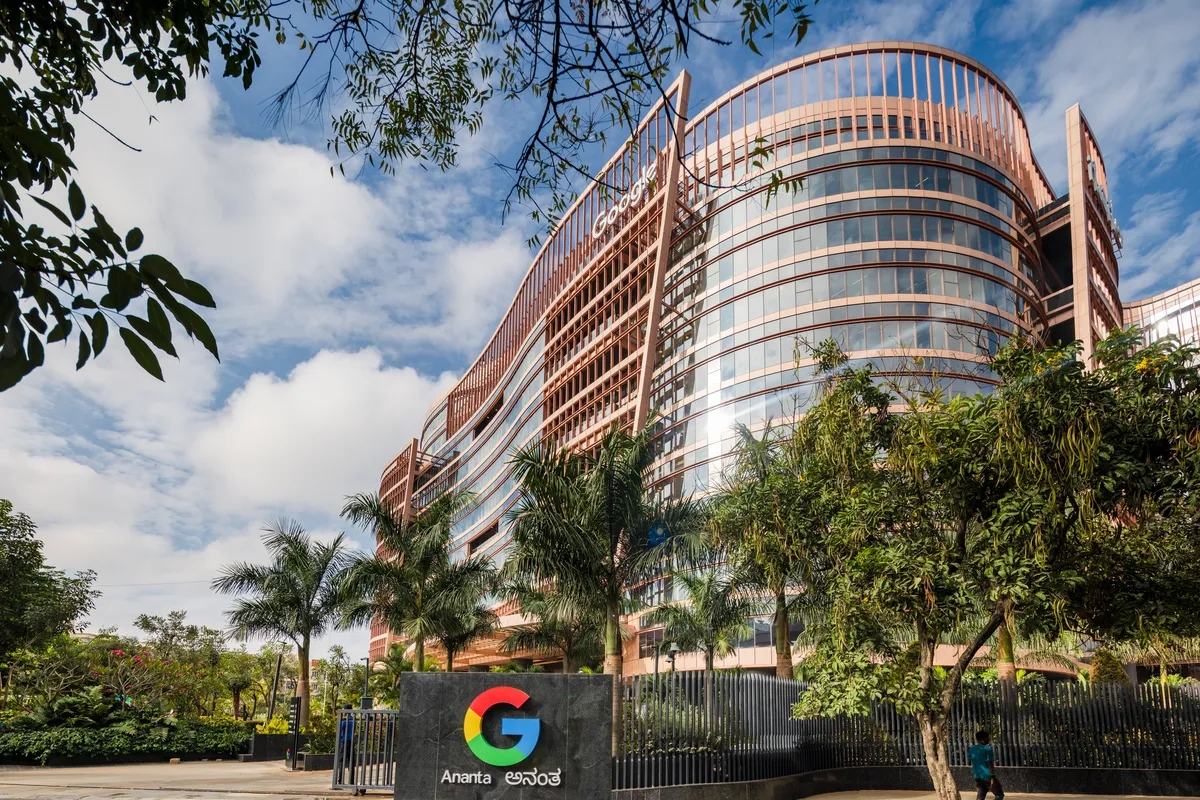
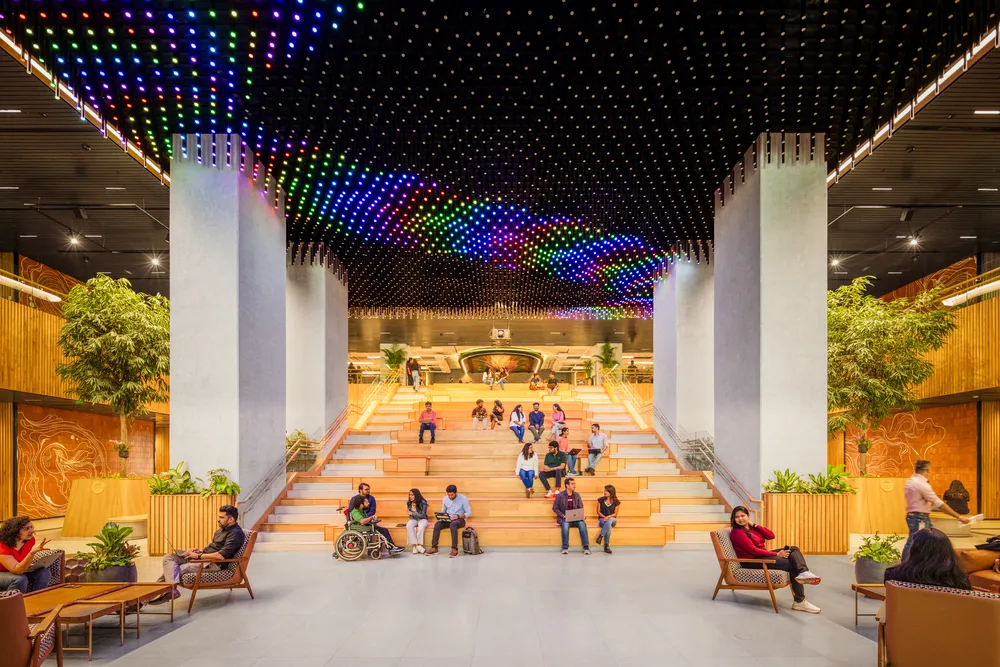
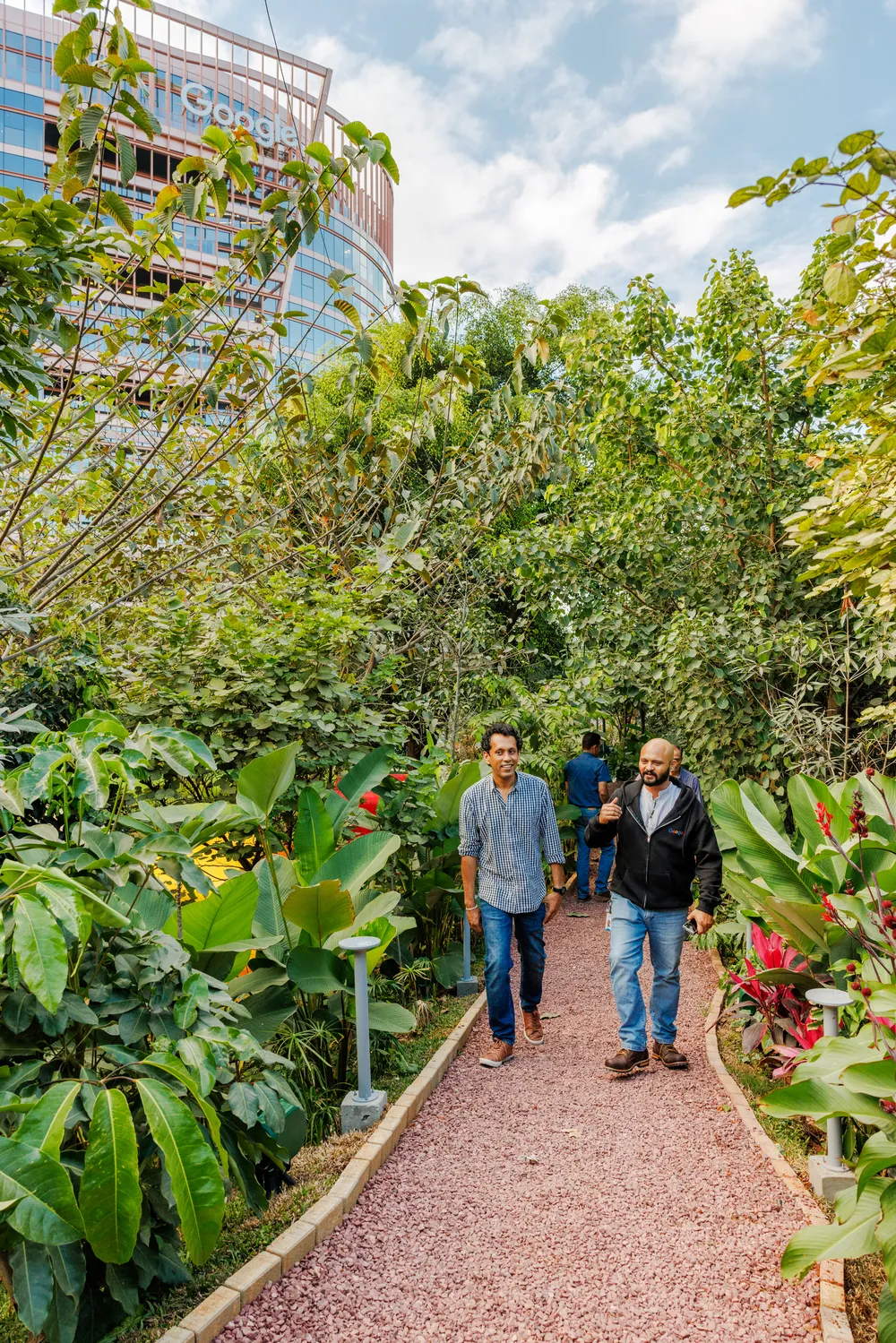
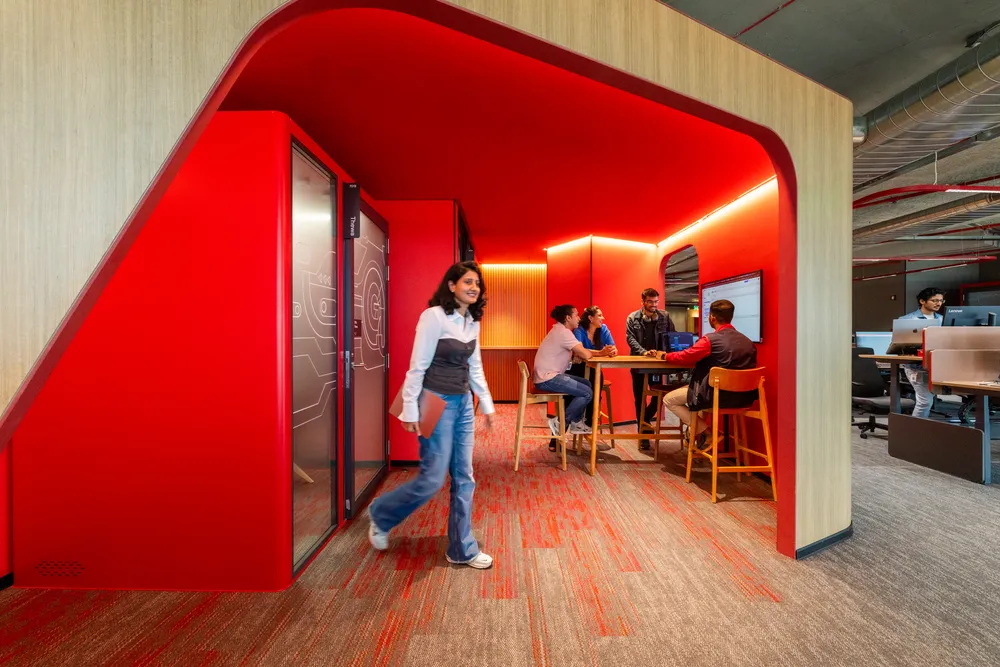


Google usually announces a new retail store at one of their hardware announcements. With the Pixel 9a coming soon, I wouldn’t be surprised if Google announces the new India store with it.
Google to Open First Physical Stores in India
Google counts India as a key growth market, where it has committed to investing $10 billion. It currently has only five physical stores, all in the United States, which sell its products such as Pixel phones, watches and earbuds.
It is aiming to mirror a retail approach that helped Apple Inc, opens new tab rake in billions of dollars in the last two decades by showcasing its own products. Apple has 500 plus stores worldwide.
Google is in advanced stages of finalising locations in or around the capital of New Delhi, and the financial capital Mumbai, said three sources, who declined to be named as the process is confidential.
Google’s decision to open physical stores in India signals its ambition to increase its market share in the country. While specific sales figures for India are not readily available, Google’s current market share in the premium smartphone segment is estimated to be around 5% as of 2024. This represents a significant jump from the approximately 1% share it held in 2023.
This move into physical retail could be a game-changer for Google in India, allowing the company to showcase its products directly to consumers and build a stronger brand presence. It remains to be seen whether Google can replicate the success of Apple’s retail strategy, but the company’s investment in India suggests it is serious about making a mark in this rapidly growing market.
